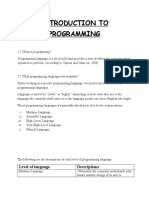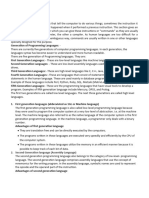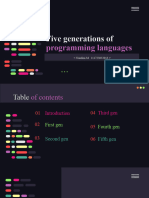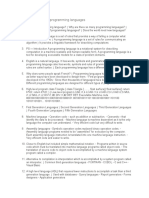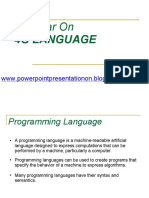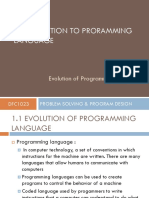0% found this document useful (0 votes)
31 views14 pagesProgramming
This document provides an introduction to programming concepts and programming languages. It discusses what computer programming is, provides examples of popular programming languages like Java and Python, and explains the different generations of programming languages from low-level machine languages to high-level languages like C++ and visual languages. The key learning outcomes are being able to recognize programming languages and differentiate between generations of programming languages.
Uploaded by
Mariem KhlifiCopyright
© © All Rights Reserved
We take content rights seriously. If you suspect this is your content, claim it here.
Available Formats
Download as PPTX, PDF, TXT or read online on Scribd
0% found this document useful (0 votes)
31 views14 pagesProgramming
This document provides an introduction to programming concepts and programming languages. It discusses what computer programming is, provides examples of popular programming languages like Java and Python, and explains the different generations of programming languages from low-level machine languages to high-level languages like C++ and visual languages. The key learning outcomes are being able to recognize programming languages and differentiate between generations of programming languages.
Uploaded by
Mariem KhlifiCopyright
© © All Rights Reserved
We take content rights seriously. If you suspect this is your content, claim it here.
Available Formats
Download as PPTX, PDF, TXT or read online on Scribd
/ 14


